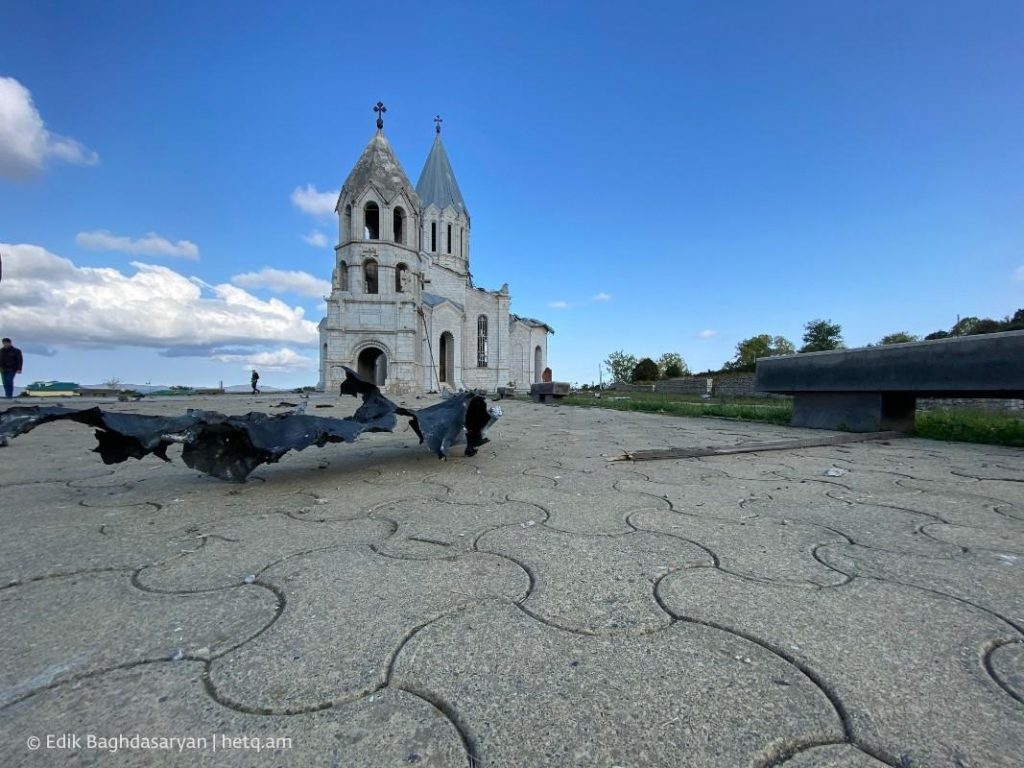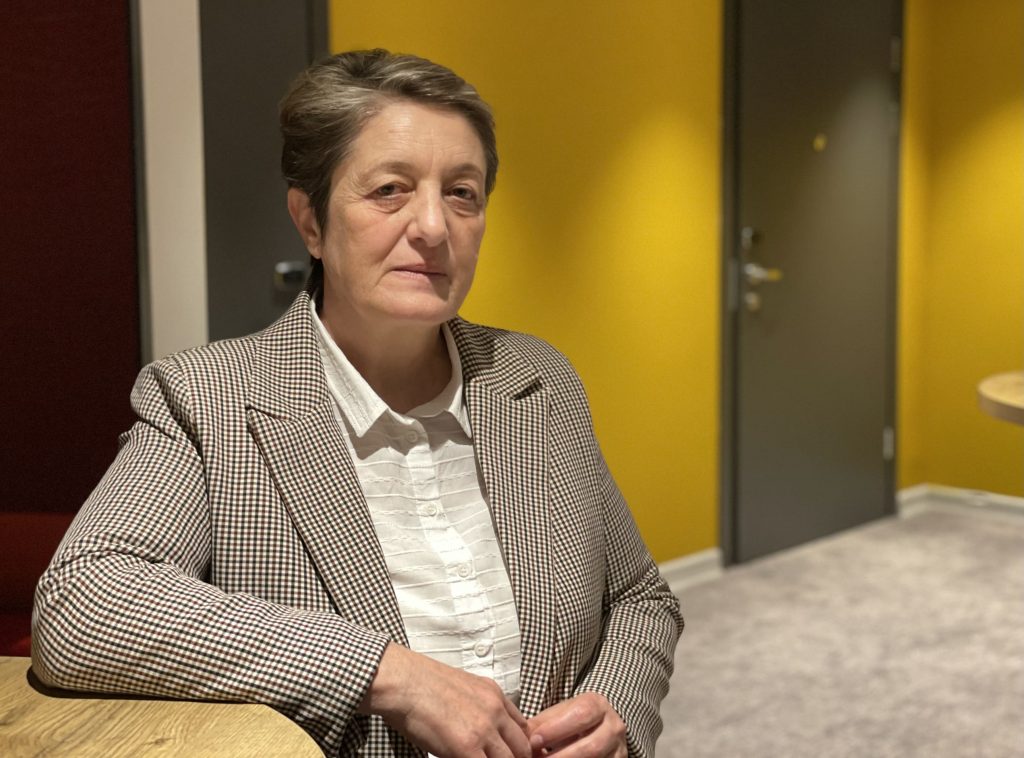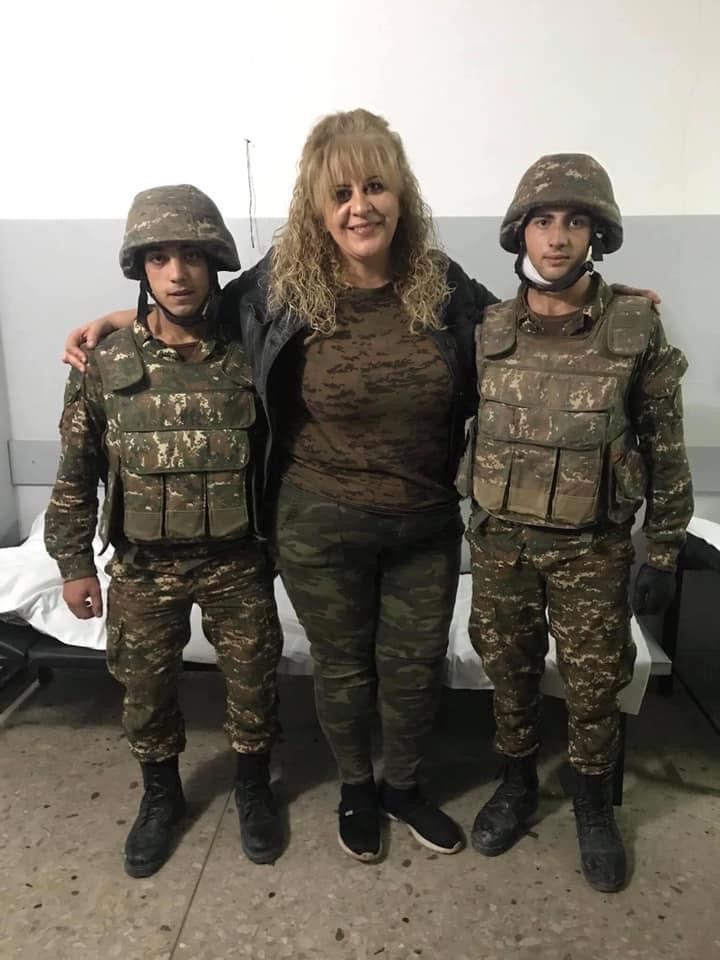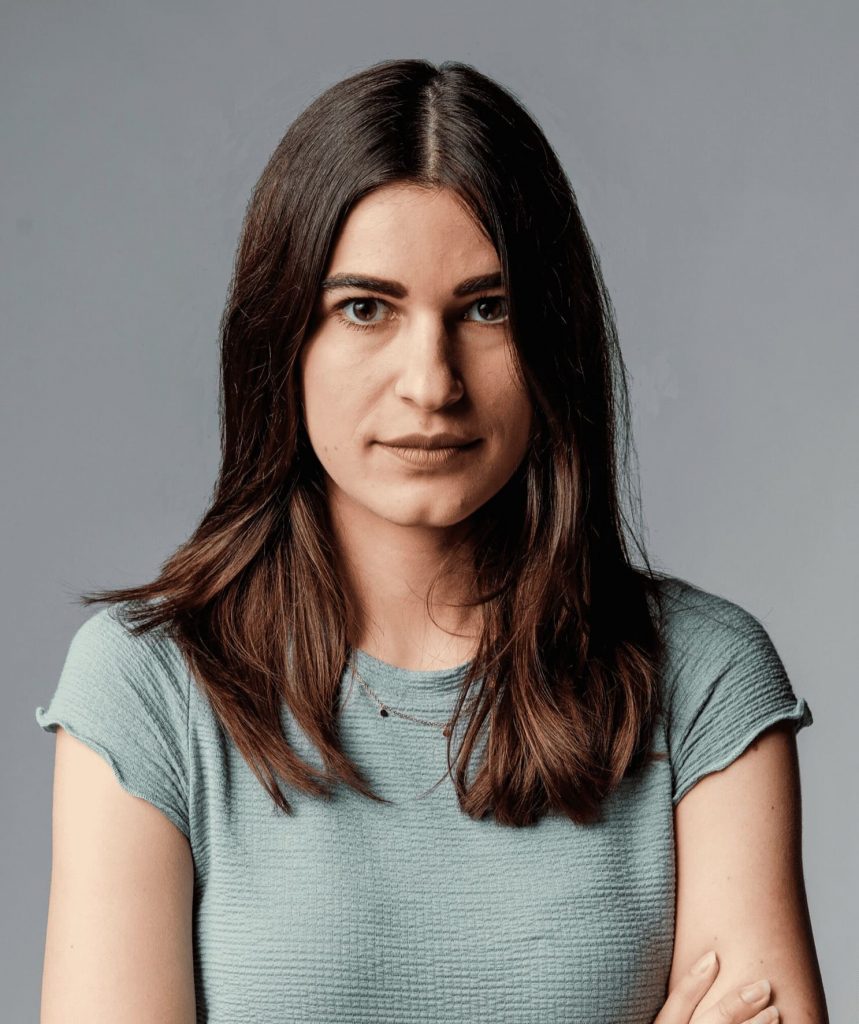In 2020, the war between Armenia and Azerbaijan over the region of Nagorno-Karabakh broke out again. Images of fighting soldiers and accusing politicians remain in our minds. Women who were also part of the war are often forgotten.
by Sarah Schröer López
Vika Sargsyan (name changed by the author as the person feared hostilities towards her) has several gigabytes of video recordings on her computer. She filmed them with her camera for weeks. “I felt like I could really make an impact with my videos,” she remembers. That was more than two years ago. But to this day, Vika Sargsyan has barely looked at most of this footage. She is a documentary filmmaker from Armenia and filmed the 44-day war between Armenia and Azerbaijan in Nagorno-Karabakh.
According to international law, the Nagorno-Karabakh region belongs to Azerbaijan. However, the region is mainly inhabited by Armenians, who invoke their right to self-determination as Republic of Artsakh, but the republic is not recognized internationally, not even by Armenia. And there has been a conflict between Azerbaijan and Armenia over Nagorno-Karabakh for decades. After a war in the region in the nineties, Armenia had control over Nagorno-Karabakh – at least until 2020.

On September 27, 2020 Vika Sargsyan wants to celebrate a friend’s birthday. Then the filmmaker starts to receive messages on Facebook saying that a war started. At the time, Vika and her friend are about an hour’s drive from Nagorno-Karabakh and spontaneously decide to go there as they have friends in the region and want to check on them. When she talks about this situation today, she seems almost surprised by herself: “At that moment, I had no idea what war actually meant. You just know black and white photos from the war and maybe some family stories. But you don’t understand what war really means.” At first, she wants to leave after a few days, but then she stays.
Araks Grigoryan is in California when war breaks out. The technical surgeon has two citizenships: the Armenian and the US one. Soon she is on a plane to Armenia. She wants to use her medical skills to help the Armenian army. “The main part of my family was against my decision because they thought that I did not understand what war was and that there was the risk of being killed,” she recalls. Her daughters, however, were very proud of her. Once in Armenia, she signs up as a volunteer. Araks Grigoryan works in Nagorno-Karabakh for seven days: “Those were the longest and most horrible seven days of my life.”

When Margarita Karamyan hears the sirens in September 2020, she thinks of the year 1992. The 60-year-old comes from Hadrut, a city in Nagorno-Karabakh. Shortly before the Soviet Union breaks apart, the Republic of Artsakh declares its independence in September 1991. The conflict boiled over, and war broke out. Margarita Karamyan is 26 years old at that time. She decides to join the army of the Republic of Artsakh, but since women are not allowed to fight, she stays in the background and organizes the distribution of food donations, for example. “Every man from every family was fighting. I could not leave them alone and just go.” The Armenian side is able to win the war at that time and occupies adjacent regions. A ceasefire agreement is reached in May 1994. About two decades later, in September 2020, bombs hit Nagorno-Karabakh again, including Margarita Karamyan’s hometown Hadrut. But again, she stays: “I could not leave our men behind, it felt like the same situation once again.”
Filmmaker Vika Sargsyan is filming footage for international news agencies at the time. Initially, she has no protective gear, neither a helmet nor a vest. “I was scared from the first day to the last. I don’t consider myself brave. To be honest, I don’t even know what it means to be brave. I stayed there as a human being. To me it made no sense that the people living there had to stay, and that I could just leave and continue my everyday life. That’s why I stayed.” During the war, she lives in an emergency shelter with her friends from Nagorno-Karabakh. There she documents their everyday life with her camera. Among them were many mothers waiting for their sons that were fighting at the front. “At some moments I wondered if this war would ever stop. I wanted it so much that one day I hid and just started crying,” Vika Sargsyan remembers. The women at the shelter found her in that situation and brought her a blanket, hot tea,

and cookies. “Moments like these gave me back my faith in humanity, even though the war was so ugly.”
Araks Grigoryan was among those who had to take care of others. She spends seven days in a basement in Martakert treating injured soldiers while bombs are hitting outside. She doesn’t really have time to eat or sleep. On top of that, the medical team has to improvise for the first five days because there is a lack of medical appliances. “I just wanted to turn off my brain, to not think for a second. But that was not possible. We would see about a hundred soldiers per day.” Araks remembers one day in particular: 25 soldiers were brought to the hospital. Four of them needed urgent surgery, but there was only one room with two beds. Not all of the injured survived their stay in the makeshift hospital.
Meanwhile, Margarita Karamyan keeps going to the military hospital in Hadrut to donate food and warm clothes. “When I saw the wounded people – I can just describe it as an awful image. I realized that this war could not be compared to anything that we had experienced before.” Margarita’s family owns four houses in Hadrut. Together with her relatives, Margarita sits in the basement of one of these houses very often, because Hadrut is attacked for days. One of their houses gets damaged. On October 7, news is circulating that sabotage groups may already be in Hadrut. Most of the women and children leave their homes, Margarita also flees in the evening hours. That was the last time Margarita saw her home. But the war continues for another month.
The Armenians are losing more and more land in a very short time. Their army is inferior to that of Azerbaijan. More than 5,000 people die in the 44-day war as stated by official sources. Finally, on November 9, an agreement is signed under Russian mediation in which a ceasefire is agreed upon. It also states that some more zones will pass under the control of Azerbaijan. The United Nations estimates that more than 90,000 people from Nagorno-Karabakh had to flee to Armenia as a result of the 44-day war. More than half of them are said to have returned by now. Margarita Karamyan is not among them, because Hadrut keeps being under Azerbaijani control ever since.
Today, after the war, Vika Sargsyan wonders whether it makes sense to publish her recordings at all. “During the war, I really hoped that my filming would make an impact. I don’t know why I had this idea. After the war I was very disappointed, and I felt like I didn’t do anything. I didn’t know how to deal with it.” The attention focused on Ukraine is something she would like to see for Nagorno-Karabakh as well. Instead, she feels that Armenia is the unwanted child when it comes to global politics. People from Nagorno-Karabakh keep asking her when their story will be published as a film. That is why Vika Sargsyan stays on: “I am still watching the material, still shooting new stuff and trying to understand what happened. Maybe that’s my way of overcoming what happened, I don’t know.”
Margarita Karamyan has been living in the Armenian capital Yerevan since the 44-day war. In 2020, the fighting stops in the morning of November 10, and Russian troops are sent to Nagorno-Karabakh to secure peace there, in line with the signed agreement. That’s the day Margarita realizes she can’t go home and decides to found an NGO called “Return to Dizak”. “I created the organization to raise our problems and to tell the world what happened.” Since then, Margarita has been meeting with residents of Nagorno-Karabakh and documenting their experiences. She shares the results with international advocates and speaks about her story at many conferences. Then Margarita tells that she has lived through two wars and that she does not know either if or when she will be able to return to her homeland.
Araks Grigoryan stayed in Armenia after the war. She carries a reminder of the war with her every day: two bullets in her wallet. During the 44-day war, an Armenian soldier was hit by them. The technical surgeon assisted in the operation where these bullets were removed, but the soldier did not survive. “It was so hard to see that young soldier die in my arms. I wasn’t ready for that.” Araks is convinced that there will be another war. Already in September 2022, there is another fighting between Armenia and Azerbaijan. The Armenian side reports that this time there have been attacks on the Armenian heartland as well. Azerbaijan speaks of an act of sabotage by Armenia. After a few days, the situation calms down again. Araks Grigoryan is sure that this is only temporary and therefore she keeps the bullets in her purse.
This article was published within the frames of “Correspondents in Conflict” Project,
implemented by Yerevan Press Club and Deutsche Gesellschaft e. V. The Project is
funded by the German Federal Foreign Office within the “Eastern Partnership Program”.
The contents of this article are the sole responsibility of the implementing partners and can in
no way be taken to reflect the views of the Federal Foreign Office. #civilsocietycooperation
 Sarah Schröer López lives and works in Cologne. As an editor at WDR radio station 1LIVE, she focuses on political reporting. Previously, she worked as a freelance author for, among others, the ARD studio in Brussels. She studied journalism and economics in Dortmund.
Sarah Schröer López lives and works in Cologne. As an editor at WDR radio station 1LIVE, she focuses on political reporting. Previously, she worked as a freelance author for, among others, the ARD studio in Brussels. She studied journalism and economics in Dortmund.












